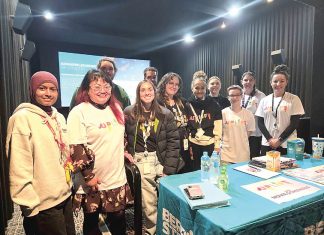A compromise on plans to restore flows to a section of the Thomson River has done little to allay the fears of some residents.
The West Gippsland Catchment Management Authority says it has accommodated “the last of a long list of issues” raised by the Friends of the Horseshoe Bend Tunnel.
However, the Friends disagree, saying there are many outstanding concerns the WGCMA has not answered.
Among these are fears 60 to 70 trees would be permanently cleared in order to make room for an excavator to access the river; and 3500 cubic metres of rock would be dumped on the iconic bend once it was dug from the river bed.
“It’ll just be a scar on the landscape forever,” Friends member Diane Lowater said.
The authority wants to restore water flows to the Horseshoe Bend section of the river to provide safe passage for native, migratory fish including the threatened Australian Greyling.
One concern raised by the Friends group almost a year ago was the location of a proposed walking path, once the fishway was constructed, which would run along the outside of the bend, placing tourists directly below a steep cliff-face and section of the Walhalla Rail Trail.
The WGCMA has now abandoned those plans in favour of incorporating two natural crossing points in the track.
While the group has welcomed the shift as a “common sense decision”, it said it only found out about it by chance when attending a Latrobe Valley Field Naturalists meeting in May where WGCMA chief executive Martin Fuller was the guest speaker.
Friends member Terry Lowater said when asked about whether the project would be the subject of an Environmental Effects Study, Mr Fuller said it was a “fanciful idea”.
“I was absolutely gutted and shattered,” Mr Lowater said.
“We really thought it was going to be something that was going to take place.”
In October last year, the Baw Baw Shire Council voiced its support, calling on the State Government to make the project the subject of a full EES.
However, the Environment Minister determined it was not required.
Mr Lowater said the group was also concerned with the size of the fishway, fearing flows in the tunnel would be reduced to a trickle as a result.
“Once the water’s reduced to the point people can go in it, it’s inevitable it’ll close. People will just get in there and start mucking around,” he said.
The group is also concerned about plans to place boulders at the tunnel’s exit.
In a statement to The Express, a WGCMA spokesperson said a small number of large boulders would be placed upstream of the tunnel exit in a bid to create turbulence and attract migratory fish.
“They will be submerged and will use local rock to blend in with the site,” the spokesperson said.
They said the new track would be designed to ensure the public could walk the length of the bend.
“There are existing low points along the existing informal walking track, which fill with water from time to time,” the spokesperson said.
“The walker can then make their own decision on whether to continue.”
The spokesperson said over the last two-and-a-half years the WGCMA had explored “every option” to minimise the size of the fishway, at the request of the Friends, and as a result it would be low-flow and visually low-impact.
They said the depth of the fishway varied from a maximum of 2.7m deep upstream to no excavation over about 200 metres.
The average depth would be 1.4m and the width would vary to a maximum of seven metres, according to the WGCMA.
“The excavated material will remain onsite, but will not impact on heritage sites that have been identified as part of a comprehensive heritage assessment,” the spokesperson said.
“The intent is to landscape and blend in with the natural features of the inner bend of the river.”
A two-metre-wide track into the tourist spot would be widened by one metre, the WGCMA confirmed, but it said this would be temporary and the area would be rehabilitated to stringent conditions.
The Authority said a preliminary Environmental Management Plan had been developed, along with a Construction Environmental Management Plan and the organisation believed these would go “well beyond any requirements set out by an EES”.
It said it had made “every effort” to keep the Friends group informed, but in recent moths the group had chosen not to be a part of the consultation process. The Friends group denies this.
“The discussions with DEPI are still underway but in good faith Mr Fuller, seeing the Friends in attendance, used the (field naturalists) meeting as an opportunity to let them know of progress on the track design,” the WGCMA spokesperson said.
It is not yet known exactly when the track design is due to be finalised.












